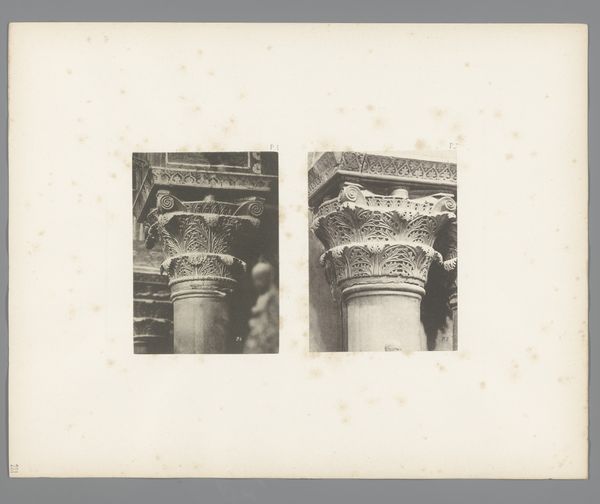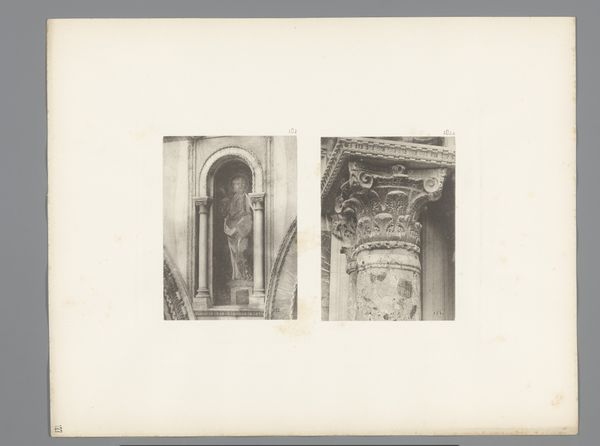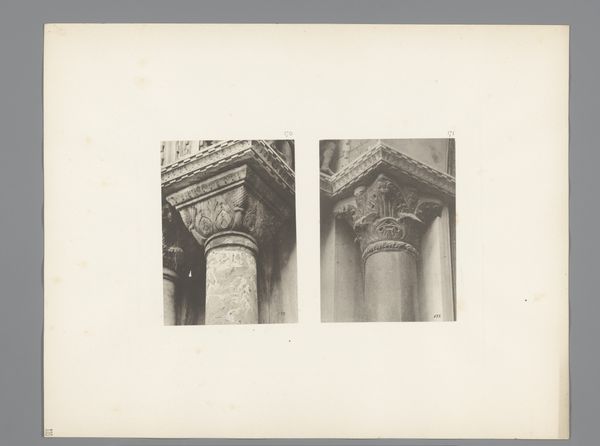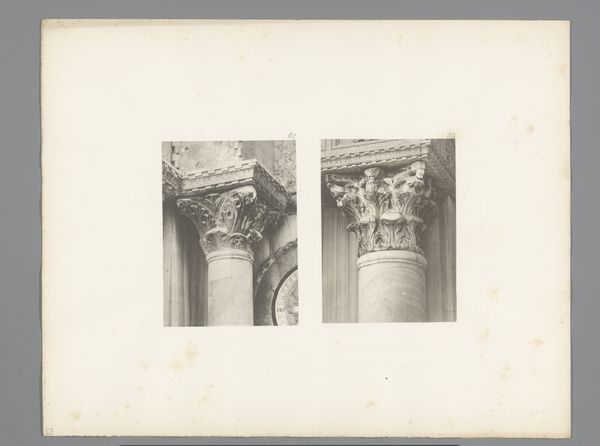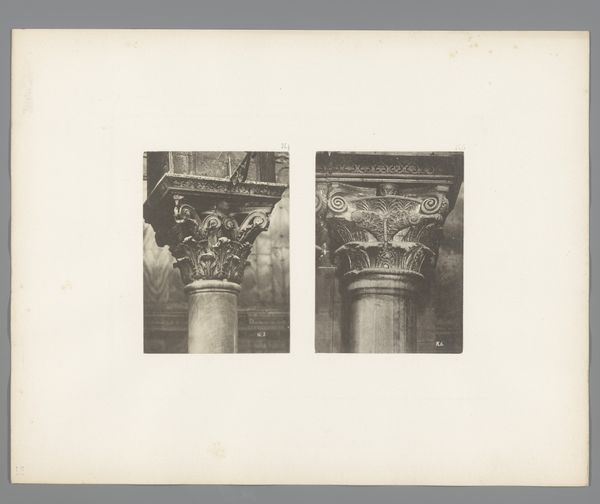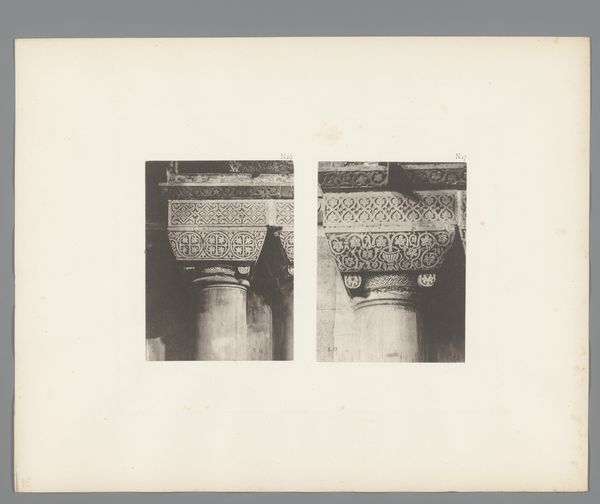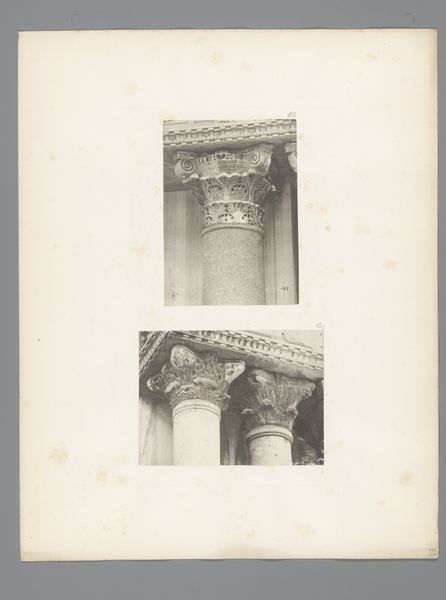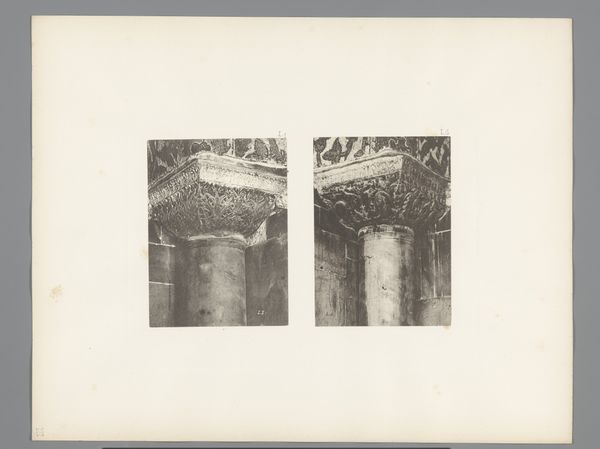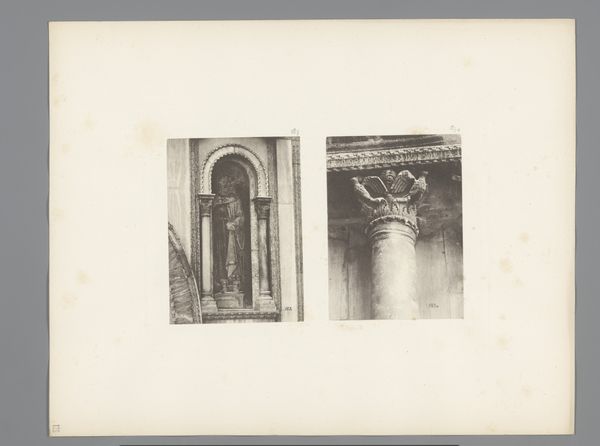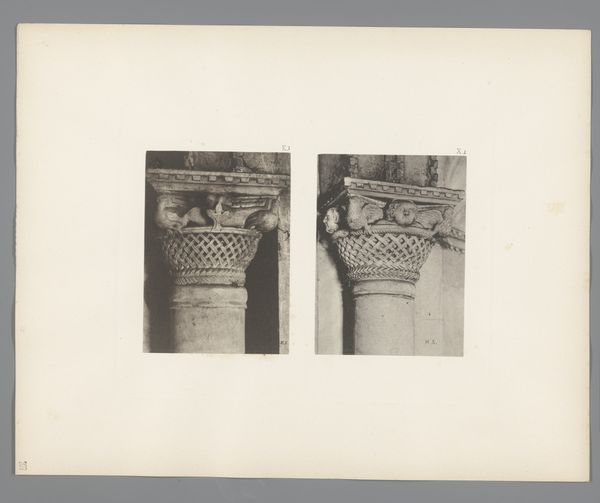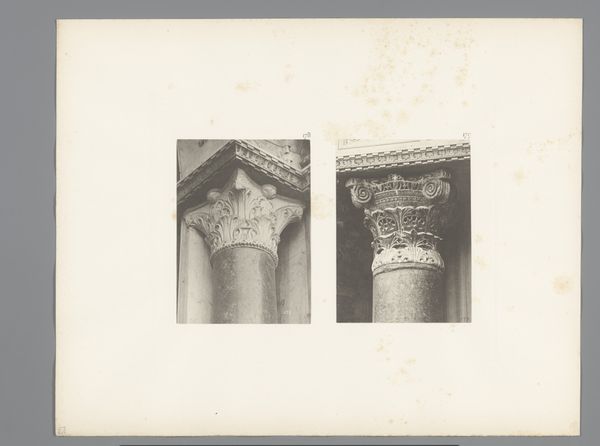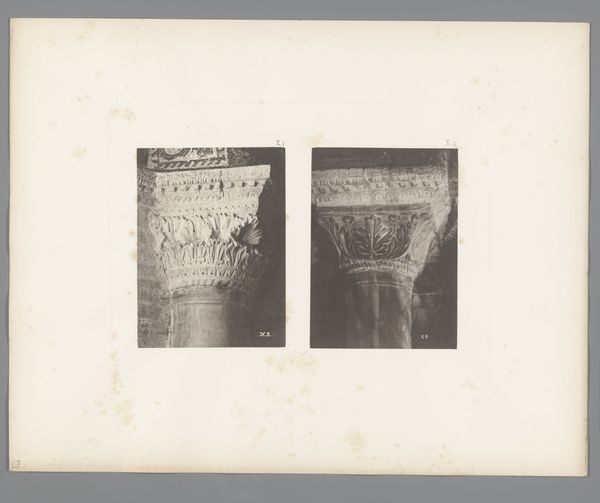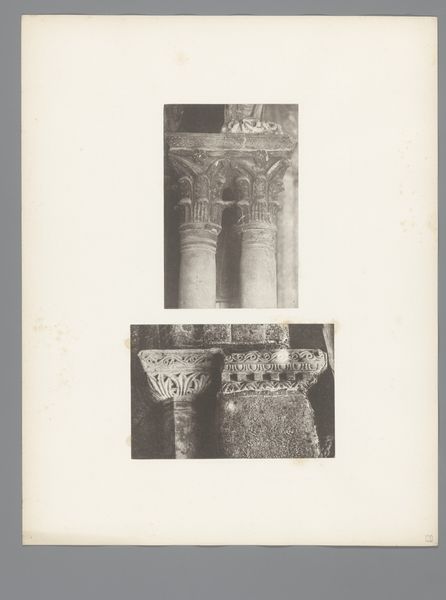
Twee afbeeldingen van Korinthische kapitelen van de San Marco in Venetië before 1884
0:00
0:00
print, photography, architecture
# print
#
greek-and-roman-art
#
photography
#
ancient-mediterranean
#
architecture
Dimensions: height 312 mm, width 394 mm
Copyright: Rijks Museum: Open Domain
Curator: This is a print from before 1884 by Carl Heinrich Jacobi entitled, “Two Images of Corinthian Capitals from San Marco in Venice”. Editor: Immediately striking, the texture in this image is incredible. I feel the weight and solidity of those ancient stones, weathered and bearing the marks of history, yet somehow frozen in this single photographic moment. Curator: Absolutely. Photography really changed architectural studies, making the dissemination of images far simpler. Look closely, and you'll see not just the ornate details of the Corinthian capitals, but also a glimpse into the ancient Greek and Roman influence so integral to the identity of Venice itself. It’s more than a visual record; it's a statement about power, history, and cultural legacy. Editor: Yes! I mean, how were the social narratives of colonialism affected by pieces like these, pieces that were widely circulated that spoke of reclaiming and possessing aesthetics? Are we celebrating beauty or are we contributing to the problem? Curator: Well, consider also how the reproduction itself altered the way architectural elements were understood. No longer limited to physical presence, they could be studied and compared across vast distances, reshaping architectural theory and practice. Editor: That’s interesting. This makes me think that the act of selecting these two capitals for representation carries a message, almost imposing meaning onto the viewer. Which begs the question: whose narrative are we reinforcing when we focus our gaze on certain architectural fragments over others? Curator: These photographs really reflect that turning point, from an era relying solely on sketches to the accessibility offered through photography, shifting our understanding and consumption of art and architecture forever after. It's about seeing architecture in a new light, through a democratic medium. Editor: Seeing a single shot opens so many lines of inquiry around intersectionality that need to be explored; pieces of the past can serve as lessons. Hopefully this can be a moment of reflection.
Comments
No comments
Be the first to comment and join the conversation on the ultimate creative platform.
